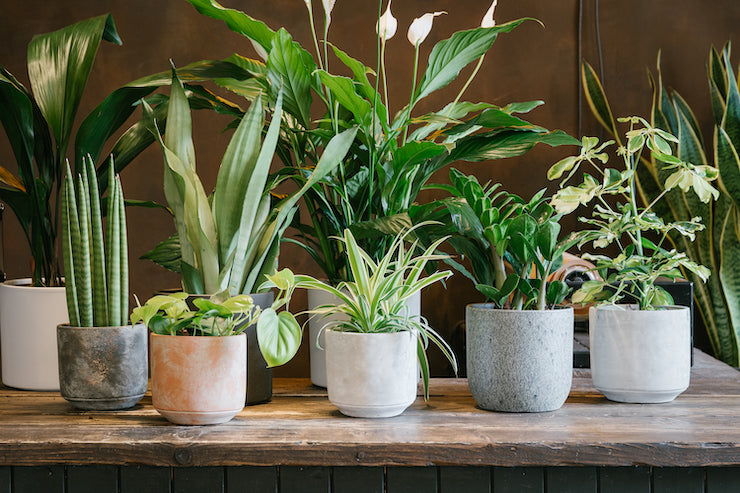
Caring for Portulacaria afra (the Elephant Bush or Spekboom Plant)
Portulacaria afra is a shrubby succulent that is part of the Didiereaceae family and can be found natively growing in rocky areas across South Africa. This fascinating plant has edible, moisture-filled leaves and is a popular food choice of grazing Elephants. This is why the plant gets its common name the Elephant Bush! It is also referred to as Spekboom in Afrikaans.
The immature growth of Portulacaria afra has striking red stems which turn woody as the plant matures. In the natural habitat of Portulacaria it will bloom in the spring and summer when gorgeous clusters of tiny pink flowers cover the plant's stems. These flowers are rich in nectar which attracts feeding insects and birds.
Traditionally these plants are favoured for their medicinal qualities and have several different uses. For example, sucking the moisture rich leaves is considered as a treatment for dehydration, heat stroke and exhaustion. Crushed leaves can be used to soothe blisters, rashes, sunburn and insect stings! Furthermore, chewing the leaves is traditionally used to treat sore throats and other mouth infections.
These fascinating plants are said to be a symbol of good luck so why not treat a friend who is starting a new job or gift one for a housewarming?
Care tips for growing Portulacaria afra in the UK
In their natural habitat, Portulacaria afra are accustomed to periods of drought and survive on the moisture they store within their leaves. In our homes, the compost of Spekboom should be allowed to dry out completely between waterings. Due to their bushy growing habit, we recommend bottom watering by placing the plant in water for half an hour to an hour to allow the plant to soak up sufficient water. These plants love bright light, so place them in a window or a bright spot in your home. Do not mist succulents as they prefer dry air.
Portulacaria afra require repotting when the roots start to come out of the base of the pot. Alternatively, remove the plastic pot and check if the roots are densely spiralling to the edges of the growing media. When repotting, use a pot with a drainage hole that is around 5cm larger than the plants current pot. Spekboom prefer compost made up of 40% Soil.Ninja Base Mix, 30% Grit, 20% Sand and 10% Zeolite. If you don't have the budget to splash out on compost components, you can use the Cactus Focus 3L. General houseplant composts should be avoided as they hold too much moisture for succulent plant varieties. Feed with a high-quality indoor plant food, such as Liquid Gold Leaf, once every 4 weeks in the Spring and Summer months only.
If the stems of your Portulacaria afra are mushy, or the leaves are yellowing, this is highly likely due to overwatering. Be particularly careful in the winter when the cold weather causes compost to dry out more slowly and the light levels are lower.. If the full stem has turned squishy remove it and allow the rest of the compost to dry out completely before you water the plant again. Placing Portulacaria afra in a warm, bright spot will allow the plant’s growing media to dry out more quickly.
We hope you have enjoyed this Blog on the history and care of the wonderful Portulacaria afra. If you’re ready to add one to your plant collection, we can deliver to your door - order Portulacaria afra.



